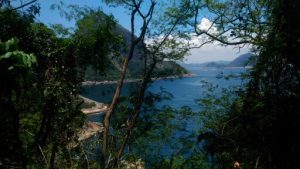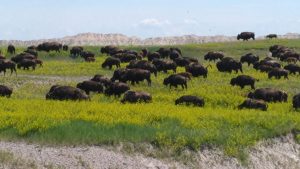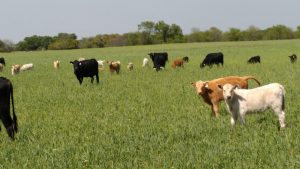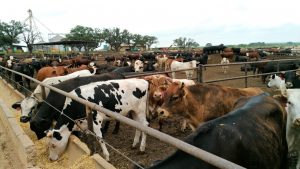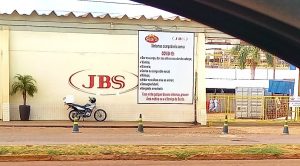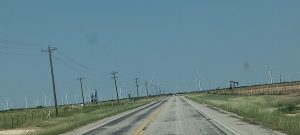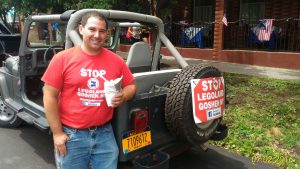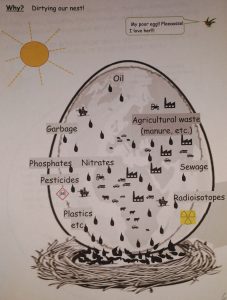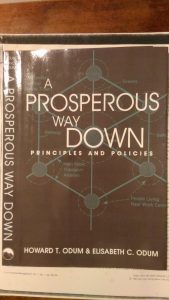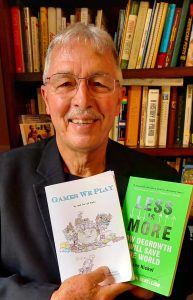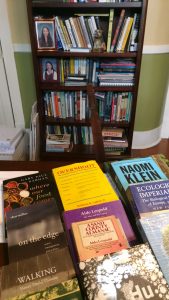I’ll try to make this very short.* This week’s presentation on degrowth and ecological principles and processes, one of the approximately last five I intend to make, will consist of only a few minutes-dosage from the holy & great (pragmatic) idealist (yours truly) who knows ALL of the consequences of the current course & actions in the human journey on Eaarth (i.e., the outer part of the doughnut of British ecologist Kate Raworth’s economic model, Doughnut | Kate Raworth ). (Props I may use will be a doughnut, baby blanket, chia seeds, careless weeds, acorns, and native bunch grass.) This presentation is simply another attempt at collective idealistic and pragmatic critical thinking along with our local holy, yet humble, pragmatists who recognize the real needs (or the inner part of Kate’s doughnut model) of our Guadalupe County and global human populations, or in a neoliberal capitalistic system … those of the Haves or the component with Power.
A sidebar I must interject herein results from my relatively regular participation in meetings of commissioners’ court, city council, and the school board … and listening to discussions & deliberations. Nature is not only more complex than we think but is more complex than we can ever think. And I cannot but be somewhat frustrated with the amorphous, superficial, and artificial complexity we create additionally in dealing with (or oftentimes conveniently ignoring):
goal setting, conceptual determination of quality life, growth, learning & teacher shortage** (or simply, a paucity of ecological learning in ecological community), faith and science, communication (including a plethora of confusing acronyms), assessment, and measurements.
Anyway, this week I am going to reflect on ecological succession and r & K species of biota. The ecological succession process is simply attempts of living systems to cover an area of Eaarth with as much solar energy-capturing webs of life as possible, given edaphic and evapotranspiration & holistic climatic constraints. A major challenge in the Anthropocene is that Homo colossus constantly disrupts and destroys (especially when fossil & nuclear energy are involved) … and dynamic homeostatic symbioses, or nature, must continuously attempt to recover, and restore the cover with the best of a climax ecological community, even when top soil has been removed, natural seed stock has been dramatically reduced, and climate & evapotranspiration has changed. Early on in ecological succession, the biota involved are mostly r-strategists, or species with a prolific, very high reproductive rate, and many of these we label, in artificial systems, as weeds (like careless weeds), pests (like grasshoppers), or vermin (like mice). As the system develops toward a climax system (and the climax community may necessarily include regular fires and oftentimes must include large grazers and browsers), it becomes composed of more K-strategists which are generally larger, less prolific, and more protective of their offspring, and they are longer lived. A few examples of K species are the longleaf pines, oaks, many mammals and perhaps even bunch grasses like the Texas state grass, sideoats grama, and little bluestem.***
I have already stressed how complex nature is. Moreover, Homo collosus has superficially added artificial complications and challenges (and with continued growth … serious complications and extremely difficult challenges). Nevertheless, simply stated in somewhat of a reiteration, probably the best use of Land in much of Texas would be ecological systems managed toward “near climax” communities of diverse bluestem prairies and diverse longleaf pine forests, including controlled burning and grazers and browsers such as cattle, sheep & goats, bison and white-tailed deer. Regrettably, artificial growth and overshoot has indeed complicated the journey toward the desired restoration of a dynamic homeostatic symbioses … which includes humans, domesticated species, and some artificial structures (ideally, given current human population numbers, … an agrarian society using appropriate applied agroecology including many perennial crops with many legumes, diverse intercropping, and agroforestry.).
On today’s Eaarth, rampant economic growth IS a serious perturbation for healthy steady-state climax systems. Moreover, lack of ecology across curricula of all human organizational systems results in lack of critical thinking and decision-making; many, many unnecessary mistakes, and unintended consequences; more & more overshoot and draw-down of the natural resources base; and much disparity and socio-ecological injustice.
pbm
7 S’s / VV->^^
……………………………………
*I’m just going to say a few things about succession and r and K species and let you local elected-deciders chose whether to delve deeper and use the knowledge of succession to critically think,plan & set policy, decision-make, and take action … or not.
**We don’t have a teacher shortage. We do have a shortage of community participation, ecological knowledge, wisdom, prudence, appropriate morals and ethics.
***Since territoriality is an important ecological process for many K-strategists and, similar to what occurred in today’s meeting (8/9/22), is a frequent component of discussion of human governmental meetings, I do want to include mention of it herein. Nevertheless, I do believe most people understand the basic concept of territoriality (e.g., a dog exibiting behaviors of urine marking, lunging, snapping, growling, or barking … not unlike the desire for signage and the snapping, growling, and barking from the public in commissioners court today). Therefore, I don’t believe this ecological process warrants more discussion herein.

